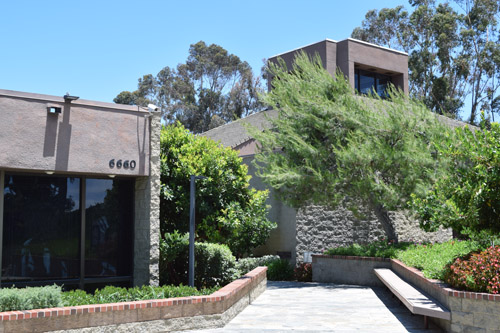
-25th in a series-
Exit 9, Waring Road, San Diego ~ Tifereth Israel Synagogue
By Donald H. Harrison
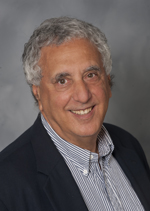
SAN DIEGO – Tifereth Israel Synagogue’s third home at 6660 Cowles Mountain Boulevard is a spiritual home filled with Judaic art and music.
Formed initially as an Orthodox congregation in 1905, the congregation’s first synagogue at 18th and Market Streets no longer exists. That building was torn down to make way for a portion of the Interstate 5 freeway. Before that time, however, the congregation had sold its property and had moved to the corner of 30th and Howard Streets in the North Park section of San Diego, at the same time choosing to affiliate with the Conservative movement of Judaism. Rabbi Monroe Levens was the congregation’s first and only senior rabbi during the three decades prior to the second building’s sale to the Covenant Presbyterian Church.
Charting the demographic shifts of San Diego’s Jewish population, Tifereth Israel next moved to the hilly San Carlos neighborhood in the eastern portion of San Diego. The congregation chose a plot of land somewhat larger than four acres at the northwestern corner of Cowles Mountain Boulevard and Tommy Drive. The synagogue was built close to the eastern foot of Cowles Mountain, which at 1,593 feet reaches the highest summit within San Diego’s city limits.

Cornerstones from the first two synagogue buildings were placed in the third synagogue’s western wall during a ceremony on July 16, 1978. The building’s dedication came nearly a year later on June 2, 1979, following a short uphill march by congregants and their new senior rabbi, Rabbi Aaron S. Gold, from the East San Diego Masonic Temple located at 7849 Tommy Drive. The Masons had graciously permitted Tifereth Israel to use its spacious facility as a temporary home during the interim period.
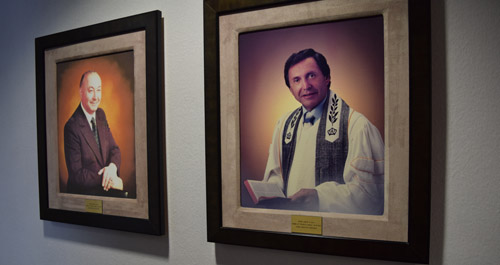
With congregants taking turns cradling the Torahs as they marched to their new permanent home, they were joined by Rabbi Emeritus Levens, and, in a bipartisan show of support, by San Diego Mayor Pete Wilson and San Diego City Councilwoman Lucy Killea. Wilson, a Republican, would go on to become a U.S. Senator from California, and later would serve as the state’s 36th governor. Killea, a Democrat, would go on to win a seat in the state Assembly and later advance to the state Senate. Near the end of her public service, she pointedly changed her voting registration from Democrat to independent in a call for greater bipartisanship in the state’s politics.
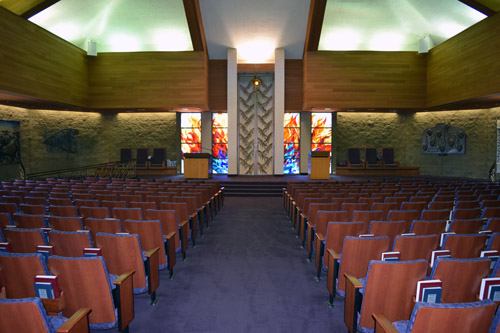
The Silverman Sanctuary into which the Torahs were marched on that June day features an imposing Aron Kodesh (Holy Ark) set against four large stained glass windows depicting the Burning Bush where God first spoke to Moses. Local art historian Karen Hjalmarson, writing in a bound volume celebrating Tifereth Israel Synagogue’s centennial in 2005, noted that each of the windows designed by glass artist Leslie Perlis measure 3 feet wide by 10 feet high and that “vivid hues of red, orange and yellow comprise the dancing and swirling flames.” The bottom segment of the composition, depicting ‘the Burning Bush that is not consumed’ “has a decidedly cooler palette, ranging in color from blue to black.” Within the flames, a careful observer can read various names of God. Light from outside, said Hjalmarson, bathes “the entire composition in an ethereal illumination.”
The Ark itself is protected by two 16’ high welded bronze doors created by sculptor Shirley H. Lichtman, whose works had been shown nationally. Hjalmarson remarked that the abstracted and beautifully textured doors “seem to form a golden interlocking vine that climbs majestically to the top of the ark,” leading the eyes of views to the Ner Tamid, or Eternal flame, which also was sculpted by Lichtman.
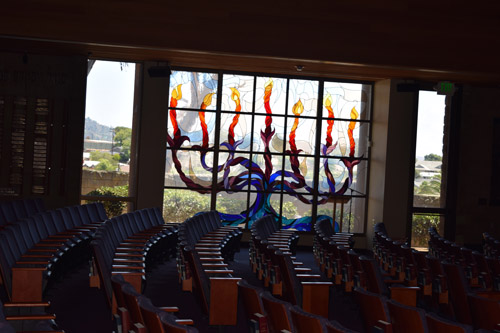
One side of the sanctuary is dominated by a 10 x 14 stained glass window, consisting of 20 panes of glass. Depicted are a colorful menorah juxtaposed against white Hebrew letters spelling out “Kadosh, Kadosh, Kadosh” meaning “Holy, Holy, Holy.” Leslie Perlis was the artist for this window as well as for another window on the opposite side of the sanctuary depicting the cycle of Jewish holidays. If one studies the stained glass windows’ design curling around a large Cabinet bearing the Holocaust Torah, one can detect a shofar for Rosh Hashanah, the lulav and etrog of Sukkot, and the Kiddush cup of Shabbat. Thus the joy of the holidays and the sadness of the Holocaust are juxtaposed.
Such juxtaposition is not unusual to Jewish ritual; often sad times are remembered amidst the happy ones—as for example when a groom breaks a glass under his foot during a wedding—the shattering said to be a remembrance of the destruction of the ancient temple in Jerusalem. This sanctuary has seen aufrufs (engagement announcements), weddings, and baby namings, but it also has been the venue for funerals. One of the saddest of these was that for Marla Ann Bennett, a San Diegan studying in Israel, who was killed in 2002 by a terrorist bomb at the Hebrew University in Jerusalem. Her family were members of the Reform congregation Temple Emanu-El, but because it then had a much smaller space, arrangements were made for the funeral to be held at Tifereth Israel. The rear walls of the sanctuary were folded back so that the social hall became part of the sanctuary and still there were not enough seats for some 2,000 mourners. For many San Diegans, Bennett’s death personified the terrible human cost of political terrorism.
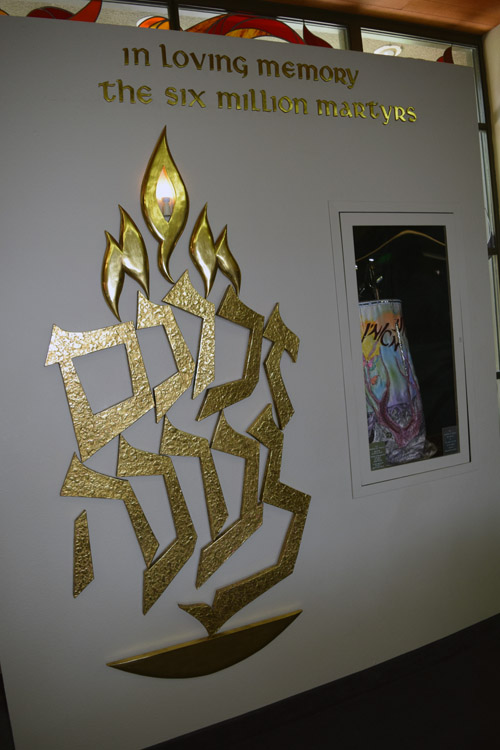
Inside the Holocaust Cabinet is a Torah that had been removed from the central synagogue of Prague by the Nazis for a museum in which they had planned to document their destruction of the Jewish people. Among many returned to the use of the Jewish people, the Holocaust Torah is read on Yom HaShoah by members of San Diego’s New Life Club of Holocaust Survivors, as well as on other occasions of remembrance. A Torah cover, also known as a mantle, designed by Chilean-born artist Jacqueline Jacobs shows some butterflies trapped by barbed wire in the darker lower portion of the mantle but other brightly colored butterflies rising above the barbed wire into the sunlight and freedom. The top of the mantle bears the Hebrew words, “Ani Ma’amin” – “I believe.” Jacobs thus conflated several Holocaust memories: the barbed wire of the concentration camp; the song Ani Ma’amin, which express the belief in the coming of the Messiah,and became an anthem for some inmates in the Nazi concentration camps; and the butterfly symbolizing freedom. The butterfly was central to the poem “I Never Saw Another Butterfly,” written by a young Pavel Friedmann in which he told of being penned up with fellow Jews in the Terezin ghetto. “The dandelions call to me/ And the white chestnut candles in the court./ Only I never saw another butterfly.”
There are other art works in the sanctuary as well, among them a 72” by 84” Jerusalem tapestry by Susan Hart Henegar; a cast bronze David’s Harp by sculptor David Gluck accompanied with words from the Prophet Isaiah: “For my house shall be called a house of prayer for all people; a Chanukiah by Sylvia and Samuel Chernov featuring nine brass urns placed in an abstract design; and a Chuppah by Marjorie Gosz and Helen Levine, bearing legends from the Song of Songs: “I am my beloved’s and by beloved is mine” and from the Prophet Hosea: “And I will betroth thee unto me forever.”
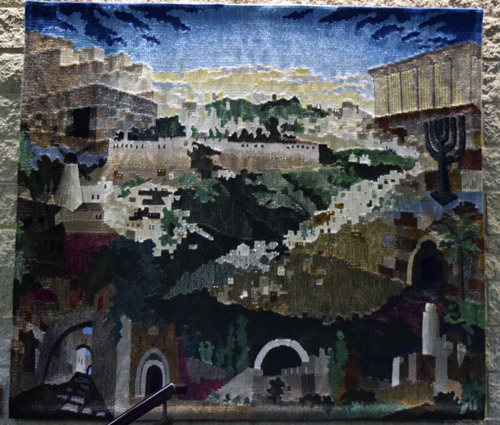

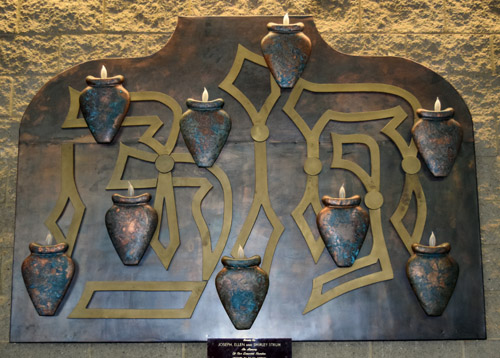
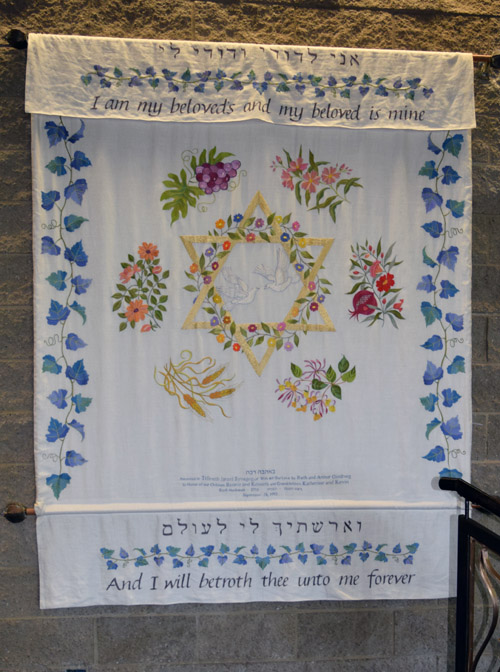
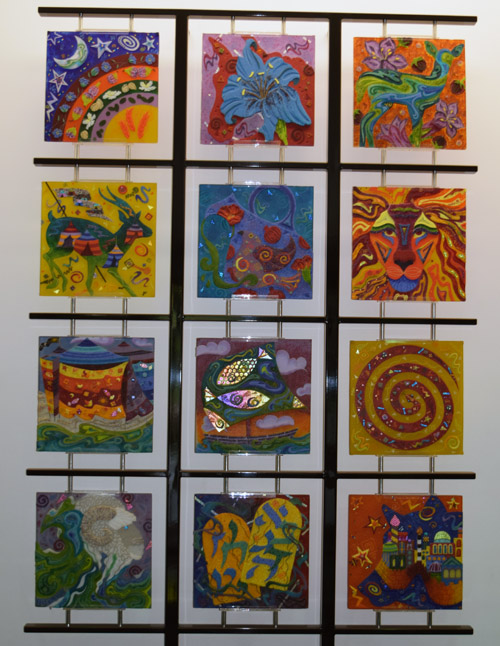
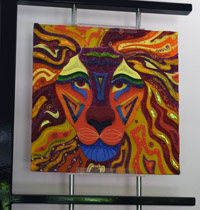
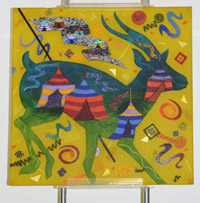
In the main foyer leading to the sanctuary, there are other significant art pieces. Occupying the most striking position is Leslie Perlis’s stained glass evocation of the 12 tribes of Israel. The grid has three vertical and four horizontal rows of 18-inch square panels. A black granite bench is placed in front of the art work to allow easy viewing. Many are the parents who delight young children by sitting with them in front of the stained glass creation and asking them what they see. “Do you see any animals?” a parent might ask. “Can you point them out to me?” “Good, do you also see a boat?” “How about a spiral?” “Can you tell me which of the pictures have the color orange in them?” “How about blue?”
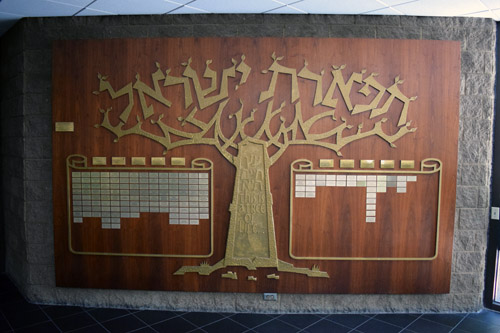
On a wall near the entrance to the sanctuary is a 12-foot wide, 8 foot-high plaque featuring a Tifereth Israel tree of life by Josef Pelzig. Plaques honoring people or remembering their simchas are mounted near the tree of life.
The foyer leads directly into the Cohen Social Hall in which numerous simchas are celebrated and congregational dinners are held. For example, the annual Purim Shpiel—which often will use a popular musical or play as a vehicle to retell the story of how Queen Esther saved the Jews – is performed on the stage at one end of the hall.
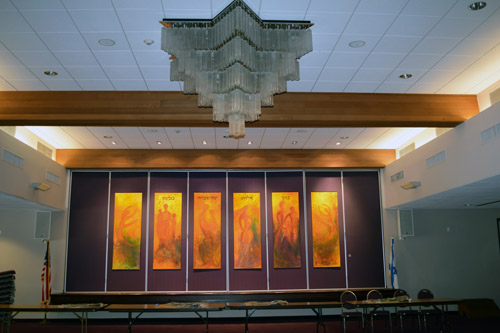
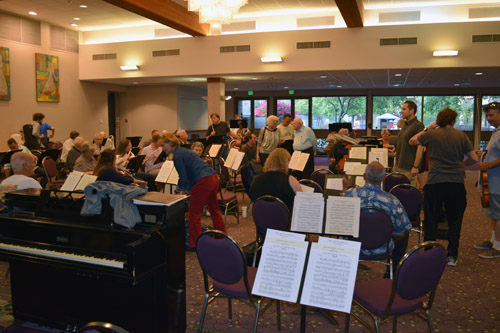
A pass-through counter to the kosher kitchen is at the other end of the hall, which is partially illuminated by a large chandelier in a six pointed Star-of David configuration This social hall is the home of the Tifereth Israel Community Orchestra (TICO) which offers several concerts a year under the baton of maestro David Amos, who has conducted professional orchestras all over the world. The orchestra brings together retired professional musicians and skilled amateurs of all religions. Amos programs many varieties of music, often with well-known guest artists. He particularly enjoys programming symphonic music built on Jewish themes in addition to more well-known secular orchestral pieces.
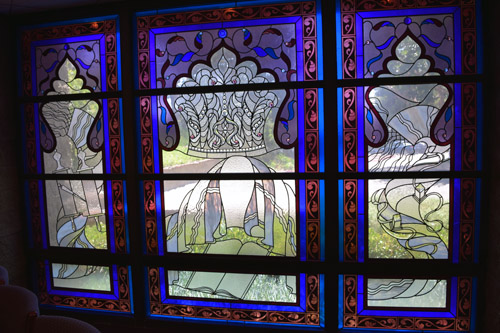
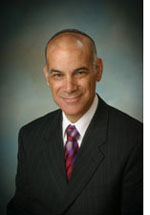
From the main foyer, one may follow another corridor to the office of Rabbi Leonard Rosenthal, who succeeded Rabbi Gold as rabbi in 1992. He and his wife Judy raised their son, Rabbi Adam Rosenthal, at this congregation. Two daughters, Adina and Margalit, also are deeply involved in the Jewish community. Near the rabbi’s office and study are the office and work spaces of the synagogue’s administrator and staff. Beyond their area, the small Goodman chapel, suitable for intimate services, is located. “Crown of Glory,” another work by glass sculptor Leslie Perlis helps to establish a mood for prayer and study. The abstract design includes the crowns of three Torahs, and smaller representations of a Torah scroll, a tallit, and tefillin.
The sanctuary, social hall, offices, and chapel comprise the main building on the Tifereth Israel campus. There is also a two-story stretch of classrooms which formerly housed the San Diego Jewish Academy, located today on its own multi-building campus in the Carmel Valley area of San Diego. The classrooms continue to be used by Tifereth Israel Synagogue’s own Silverman Pre-School and Abraham Ratner Torah School as well as by a well-stocked library, named for a former elected member of the San Diego Unified School Board and her husband, a retired hand surgeon, Sue and Richard Braun.
The campus also includes a playground, as well as room for a large congregational sukkah within which the holiday of Sukkot is annually celebrated.
*
From Waring Road exit proceed south to left turn on Navajo Road. Follow to Cowles Mountain Blvd, turn left, and left again on Tommy Drive. Entrance to synagogue is off Tommy Drive.
*
Next: Flowing waters of justice
*
Harrison is editor of San Diego Jewish World. You may comment to him at donald.harrison@sdjewishworld.com or post your comment on this website provided that the rules below are observed.
__________________________________________________________________
Your comment should be followed with this information: Your full name, your city and state (or country) of residence. Letters lacking such information will be automatically deleted. San Diego Jewish World is intended as a forum for the entire Jewish community, whatever your political leanings. Letters may be posted below provided they are responsive to the article to which they are affixed, and civil in their tone. Ad hominem attacks against any religion, country, gender, race, sexual orientation, or physical disability will not be considered for publication. There is a limit of one letter per writer on any given day.
__________________________________________________________________
I have been in Tifereth Israel many times attending Tico Concerts and visiting when my daughter is in town. You have captured more than the essence of this synagogue; your have given new appreciation for its many aspects and history. Nicely done. Looking forward to finding out more about the Jewish connection at all of the Interstate exists. Keep up the good work!
Thanks for a thorough and well-documented artistic view of Tifereth Israel, about which, I’m sure, even many long-time members of the congregation don’t know. They’re just used to all the beauty when they enter but don’t know how it all came to be. Thanks again, in making these stories live in posterity.
Jerry Hermes
President
Tifereth Israel Synagogue
Excellent article about Tifereth Israel. We remain a “Gem” in the San Diego community. Too bad so many new residents to the San Diego area who live in North City and County don’t want to venture south of Hwy 52 or I-8 where the vibrant Jewish community of San Diego began.
–Perry Arenson, San Diego
What a beautiful write up of Tifereth Israel! The photos are spectacular! You have well documented its beauty to justify the title of it being a “home for the arts!” As a newer resident of the San Diego area, I have really enjoyed reading the I-8 Jewish Travel series. There is a long Jewish presence and history here that provides a good backstory to help a newcomer like me appreciate the many branches of Judaism represented in San Diego. Thank you!
–Karla Ober, San Diego